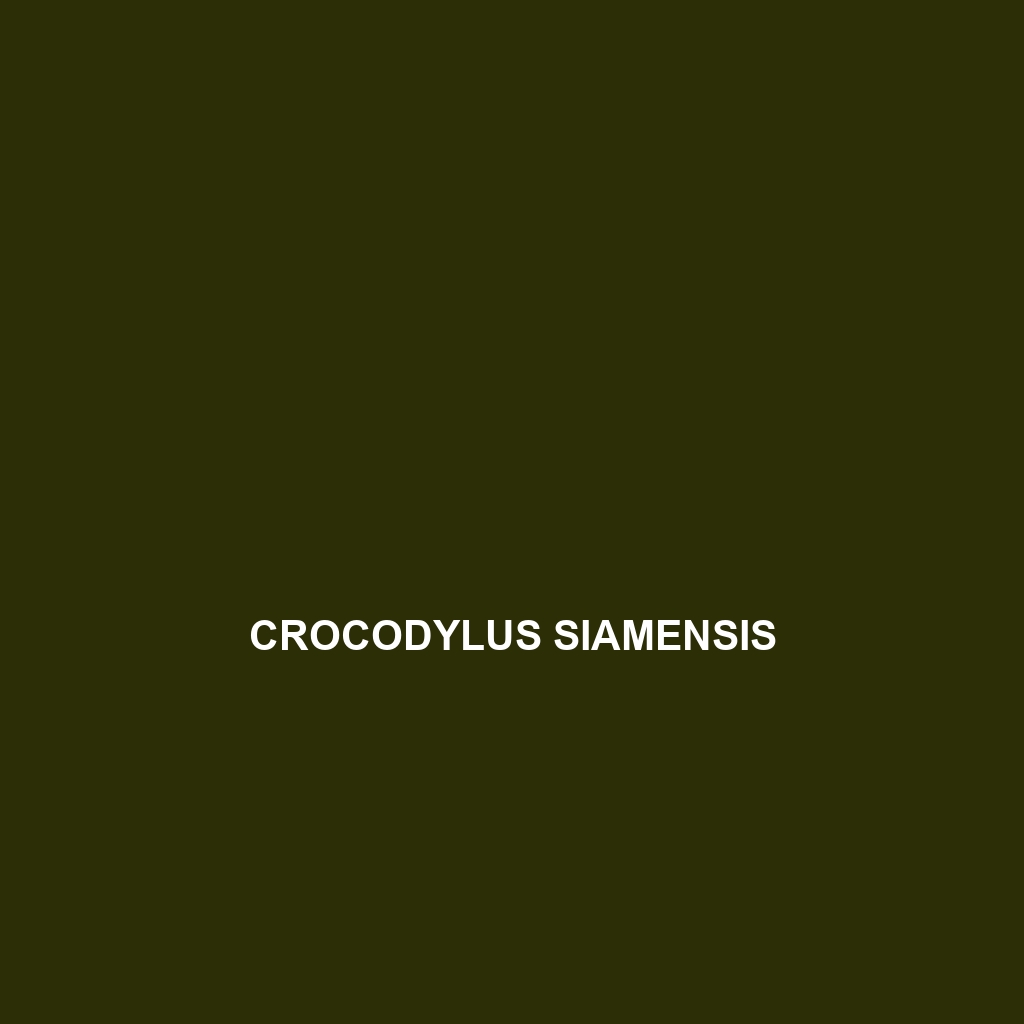Crocodylus siamensis
Common Name: Crocodylus siamensis
Scientific Name: Crocodylus siamensis
Habitat:
Crocodylus siamensis, commonly known as the Siamese crocodile, is primarily found in Southeast Asia. This species inhabits tropical freshwater environments such as marshes, rivers, and lakes. Notable geographic locations include Thailand, Cambodia, Laos, Vietnam, and parts of Myanmar. They prefer slow-moving water bodies with abundant vegetation that provides them with ample hiding spots and nesting areas.
Physical Characteristics:
The Siamese crocodile can grow up to 3 to 4 meters in length, exhibiting a robust and elongated body shape. Its coloration varies from dark green to brown with distinctive dark banding on the body, which serves as camouflage. Their snouts are relatively broad and flat, distinguishing them from other crocodilian species. Notable features include their powerful jaws and sharp teeth, capable of exerting remarkable bite force.
Behavior:
Crocodylus siamensis is predominantly nocturnal, displaying heightened activity during the night. They are known for their territorial nature, often resting on riverbanks or basking in the sun during daylight hours. These crocodiles exhibit social behavior, particularly in nesting areas where females may congregate. Their ability to communicate through vocalizations, such as hissing and growling, is noteworthy, especially during mating season.
Diet:
As carnivorous reptiles, Siamese crocodiles primarily feast on fish, birds, and small mammals. They are opportunistic feeders, employing ambush tactics to capture prey. Their diet can vary significantly depending on the availability of food sources in their habitat. Young crocodiles tend to consume smaller aquatic animals, while adults can take down larger prey, demonstrating their adaptability in feeding habits.
Reproduction:
Crocodylus siamensis reaches sexual maturity at approximately 2 to 4 years of age. Breeding typically occurs during the rainy season, which provides favorable conditions for nesting. Females lay around 20 to 50 eggs in sandy nests near water bodies. After an incubation period of about 80 to 90 days, hatchlings emerge, which are vulnerable to predation in their early stages of life. Maternal care is observed, as females guard the nests and help the young to water.
Conservation Status:
The Siamese crocodile is currently listed as Vulnerable on the IUCN Red List due to habitat loss, poaching, and illegal trade. Conservation efforts are crucial to preserving their remaining populations, which are threatened by human encroachment and environmental changes. Efforts include habitat restoration and legal protection in certain regions.
Interesting Facts:
The Siamese crocodile is among the few species that are known to have hybridized with other crocodile species in captivity, revealing their adaptive potential. Additionally, they play a crucial role in maintaining ecological balance by controlling fish populations in their habitats.
Role in Ecosystem:
Crocodylus siamensis serves as a top predator in its ecosystem, influencing the population dynamics of various species. By regulating fish and bird populations, they help maintain the health of aquatic ecosystems. Their nesting activities also contribute to the nutrient cycle in the environment, benefiting other organisms.
